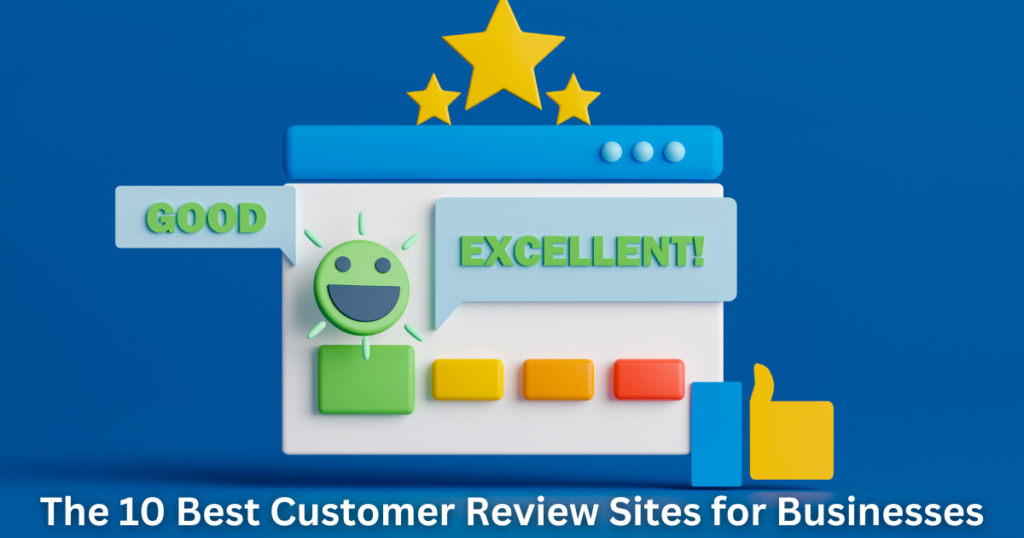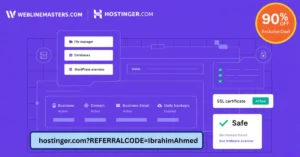Customer reviews are like magnets, drawing potential customers toward your business and enhancing your reputation. By collecting reviews on popular customer review websites, you can build trust, encourage conversions, and improve your local search engine rankings, leading to increased online visibility.
Let’s delve into the benefits of customer reviews and explore the best customer review sites for businesses in 2025.
What Are the Benefits of Customer Reviews?
1. Build Trust
Trust is a crucial factor for consumers. According to 2022 research from Salsify, 46% of U.S. consumers are willing to pay a premium for trusted brands. This emphasizes the importance of establishing your brand as trustworthy. Positive customer reviews play a significant role in this process. When potential customers see positive feedback from others, it reassures them about your product’s quality and your company’s reliability.
2. Improve Online Visibility
Customer reviews can significantly impact your business’s online visibility. By collecting reviews on customer review websites, you increase the chances of your business profile being discovered by your target audience. Reviews also influence your ranking in local search results. For instance, Google considers review count and review score on Google Business Profile (GBP) when determining local search rankings. A business with more reviews and a higher overall rating is likely to rank higher than its competitors.
Managing your business’s profile across various customer review sites can be challenging. However, tools like Semrush’s Listing Management tool can streamline the process by centralizing the management of your business listings on multiple review websites, enhancing your online presence.
3. Drive More Sales
Positive reviews can lead to increased customer spending. As more potential customers find your business online and see it as trustworthy, they are more likely to make purchases, driving more sales and revenue. Thus, customer reviews play a pivotal role in business growth.
The 10 Best Customer Review Sites for Your Business
1. Google Business Profile
Google Business Profile (GBP) is a free tool that lets businesses manage their online presence and improve visibility across different Google services like Google Search, Google Maps, and Google Shopping. For example, if you search “best Indian restaurants in Manhattan” on Google, you’ll get a result like this:
This is called a Google Local Pack (or Map Pack), a search engine results page (SERP) feature that displays top local businesses for location-specific queries in search results. Google builds Local Pack results from Google Business Profile listings. Encouraging your customers to leave reviews on your GBP can significantly improve your visibility.
By managing your Google Business Profile, you help your business appear in search results when someone searches your company’s name or performs a local search related to the products or services you offer. To compete effectively, optimize your listing with relevant information such as your business phone number, address, photos, operating hours, and videos.
Adding your products to your Google Business Profile listing can also make them appear in Google Shopping for location-specific keywords.
2. Facebook
Facebook is the most popular social media platform, with billions of active users. People use Facebook not only to connect with friends and family but also to discover businesses. Creating and optimizing your Facebook business page presents a huge opportunity, especially if your target audience uses Bing, which incorporates Facebook reviews into its local search results.
To optimize your Facebook business page, include your business address, phone number, email, operation hours, and other relevant information. Engage your audience through posts, stories, giveaways, and more. Users can rate your business and leave written feedback. Facebook asks users whether they recommend a company, and this input calculates the business’s recommendation rating, which ranges from 1-5.
These reviews are public, and business owners have the opportunity to respond. Facebook also allows customers to interact directly with businesses via messaging, providing a convenient and personal way to connect.
3. Yelp
Yelp is a popular review site among local customers, with millions using it to discover and evaluate businesses ranging from restaurants and retail stores to service-based businesses like contractors and electricians.
Yelp offers a wide range of filters to help users find exactly what they want, allowing businesses to be sorted based on factors like “Recommended,” “Highest Rated,” and “Most Reviewed.” This highlights the importance of both the quantity and quality of Yelp’s customer reviews. Yelp also fosters a two-way communication channel, allowing users to message businesses directly.
Claiming your Yelp listing for free and optimizing it with relevant information like phone number, hours of operation, photos, videos, address, and specialties can put your business in front of more potential customers. Search engines like Yahoo use Yelp for local search results, making it even more important to encourage your customers to leave reviews on your Yelp listing.
4. Tripadvisor
Tripadvisor is an online platform that provides travelers with the information they need to plan their trips, including discovering and evaluating local businesses such as hotels, holiday homes, and restaurants.
Operating across several countries and languages, Tripadvisor features over a billion reviews about millions of companies worldwide. Search engines like DuckDuckGo and Bing feature Tripadvisor reviews in their local search results.
By collecting customer reviews on Tripadvisor, you can increase the chances of your business appearing in these search results. Tripadvisor offers several filters and sorting options to help users find exactly what they’re looking for. Businesses can create or claim their Tripadvisor listing for free and optimize it with relevant information like business address, phone number, operating hours, photos, and more. You can also run ads to promote your business on the platform.
5. G2
G2, formerly called G2 Crowd, is an online review platform for software businesses. Over 80 million B2B buyers use the platform to discover and evaluate software.
G2 provides users with relevant information about software, including product information, customer reviews, pricing, and features. Users rate products on a scale of 1-5, and reviews are in-depth, with specific questions asked during the review process such as:
- What do you like best about [software]?
- What do you dislike about [software]?
- What problems is [software] solving, and how is that benefiting you?
Businesses can directly respond to these reviews on their G2 profile.
Creating or claiming your G2 profile can help improve your online visibility and understand your customers’ pain points and areas for improvement. The free plan includes basic G2 Profile abilities, access to earned badges, and beginner review collection capabilities. For additional features like advanced customization options, review promotion, demand capture tools, and analytics, subscribing to a paid plan is necessary.
6. Amazon
Amazon is one of the world’s largest retailers, with millions of monthly active users. More people start their product searches on Amazon than on Google, relying heavily on Amazon reviews to make purchasing decisions.
Even if they aren’t looking to purchase from Amazon, customers often read product reviews on the platform to gauge product quality and reliability. Customer reviews significantly impact the rankings of Amazon product listings. The more positive reviews your product has, the higher it will rank in Amazon search results.
Search engines also display Amazon listings for many product searches. Thus, having more positive customer reviews on Amazon can increase the chances of your products appearing on search engines for relevant queries.
Customers can rate products on Amazon on a scale of 1-5, and reviews from verified purchases are marked with a “Verified Purchase” tag.
Amazon doesn’t allow sellers to respond directly to reviews, but both third-party sellers and manufacturing brands benefit from positive reviews, which can drive more sales and increase brand awareness.
7. Trustpilot
Trustpilot is a popular third-party review site where customers can review businesses they have purchased from. Customers rate companies on a scale of 1-5 and leave detailed feedback. The overall score considers multiple factors, such as the age and number of reviews.
Trustpilot offers a free basic service for everyone. To access additional features like inviting more customers to leave reviews, displaying feedback on product lines, managing reviews for multiple locations, and gaining deeper insights through advanced analytics, businesses can opt for paid plans.
Trustpilot provides various features to help companies manage and showcase customer reviews. For example, businesses can easily embed a Trustpilot widget to display reviews on their website.
Trustpilot also integrates with platforms like Zendesk, Freshdesk, and Slack for better review management and response capabilities.
8. Angi
Angi (formerly Angie’s List) is a U.S.-based review platform that helps homeowners find, rate, and review home service professionals, such as plumbers, roofers, electricians, and landscapers. Users can get personalized quotes based on their specific needs or request quotes from specific service professionals.
Home service professionals can list their businesses on Angi to build a strong online presence. They can showcase their work, customer reviews, and other relevant business information, as well as manage quote requests and communicate with potential customers.
Angi verifies each review for authenticity, making it a reliable source for customers looking to hire service professionals.
9. Better Business Bureau (BBB)
The Better Business Bureau (BBB) is a trusted name for consumers seeking information about businesses. While customers can write reviews on BBB, the platform primarily gives businesses a grade from A+ to F based on factors such as complaint history, time in business, type of business, adherence to commitments, business practices, advertising issues, and licensing or government actions.
Millions of consumers in the U.S., Canada, and Mexico trust BBB ratings. A positive BBB rating can enhance your business’s credibility, while a negative rating might deter potential customers.
10. Foursquare
Foursquare is a location-based platform that lets users discover and learn about local businesses. It powers location services for brands like Spotify, Snapchat, and Coca-Cola. Users can evaluate businesses using the map interface and several filters to find the best fit based on location and recommendations.
By claiming or creating a Foursquare listing, businesses can reach millions of users searching for local companies. Foursquare also serves as a portfolio where consumers can learn more about the business and its offerings.
Establishing a presence on these review sites is crucial, but equally important is responding to all customer reviews, especially negative ones. Here’s how.
How to Respond to Customer Reviews
Responding to reviews shows that you value your customers’ opinions. Here are some strategies for responding to both positive and negative reviews effectively.
Responding to Positive Customer Reviews
1. Thank them for their time: Acknowledge the customer’s effort by expressing gratitude in your response.
- Message template: “Dear [customer name], thank you for choosing [your business] and taking the time to write this review. It means a lot to us!”
2. Personalize your response: Along with expressing gratitude, it’s equally important to personalize your response. This can make them feel special and valued, showing that you genuinely care about every single customer’s experience. Personalization isn’t just about using their name in your response. You should also mention specific details from the review that show your attentiveness and commitment to their satisfaction.
- Message template: “Hi [customer name], we’re so glad to hear that you enjoyed the [specific product/service]. We remember how you mentioned the importance of [specific detail they highlighted], and we’re thrilled that it met your expectations! Looking forward to your next visit.”
3. Stay humble: No matter how many reviews you get on your business profile, it’s important to be humble in each of your responses.
- Message template: “Hi [customer name], we’re genuinely honored by your kind words. It’s customers like you who make our job wonderful. Looking forward to your next visit.”
4. Invite them back: Responding to positive reviews is a great way to increase customer retention. In your response, encourage your customers to purchase from or interact with your business again.
- Message template: “Dear [customer name], we’re excited to have you as part of the [your business] family. Please come back soon; we have even more to offer!”
Responding to Negative Customer Reviews
Responding to negative reviews is challenging but necessary. It’s tough to take harsh criticism and deal with angry customers, but it’s crucial for maintaining your online reputation and showing that you value your customers’ opinions.
1. Acknowledge the problem: Read reviews carefully and try to understand what your customer is unhappy about. Acknowledge their concerns in your replies to show them you hear what they are saying.
- Message template: “Thank you for sharing your experience with us. We’re sorry to hear that you encountered [specific issue]. Your feedback is valuable, and we’re actively working to address this matter.”
2. Stay calm and professional: Don’t react emotionally to negative reviews, no matter how harsh or unfair they may seem. Keep your cool, acknowledge their problems, and respond to every single review professionally.
- Message template: “We appreciate your feedback, [customer name]. We’re committed to improving our services and ensuring every customer has a positive experience.”
3. Don’t get personal: Respond to reviews professionally without attacking or retaliating. Otherwise, it can harm your business’s reputation.
- Message template: “We apologize for any inconvenience you faced, [customer name]. We’re dedicated to resolving this issue and appreciate your patience.”
4. Offer to resolve the situation: Address the situation or misunderstanding. Highlight your commitment to their satisfaction and willingness to take the necessary steps to make things right.
- Message template: “Hi [customer name], we’re truly sorry for the trouble you’ve encountered. We’d like to make things right. One of our customer support representatives will reach out to you soon.”
5. Take the extra step: Go beyond merely addressing and resolving the issue. Offer a heartfelt incentive like flowers, a box of chocolates, or store credit to encourage them to give your business a second chance.
- Message template: “Dear [customer name], we deeply regret the experience you had. We’d love the chance to turn this around. We’d like to give you a [gesture] as a token of our commitment to your satisfaction.”
6. Use it as an opportunity to improve your product/service: Learn from negative reviews to fix what’s wrong. Take the feedback seriously and make the necessary changes.
- Message template: “Thank you for sharing your concerns, [customer name]. Your feedback helps us enhance our offerings. We’re taking your comments to heart and making necessary improvements.”
No matter how many review sites you’re on, make it a habit to respond—especially to the negative ones. Keeping track of and responding to reviews across different customer review websites can get overwhelming. Make it easier with Semrush’s Review Management tool.
Once you start collecting reviews, it’s a good practice to display them on your website. This can help build trust and credibility among your website visitors.
How to Display Customer Reviews on Your Website
Displaying customer reviews on your website can help build trust with visitors. Here are a few effective ways to showcase them:
1. Embed a Carousel on Your Homepage: Place a sliding carousel on your homepage that features different customer reviews. This can help engage your website visitors and give potential customers an idea of the quality of your product/service.
2. Highlight Product-Specific Reviews on Dedicated Product Pages: Add reviews specifically related to individual products on their corresponding product pages. This provides relevant and convincing insights to potential customers browsing these products.
3. Create a Testimonials Page: Display all five-star reviews on a single page. This page serves as an easy reference for potential customers to see what others have to say about your product and service.
4. Add Them to Your “About Us” Page: Your website’s About Us page is where visitors go to read your story and learn more about your business, values, ethics, and more. Adding customer reviews to your About Us page can add a layer of authenticity to your brand’s narrative.
Let Your Customers Speak on Your Behalf
Customer reviews can shape how people see your business. Just like you’d trust a friend’s opinion about a restaurant, others will trust what your customers say about your products or services.
Collecting reviews on authoritative customer review websites can help you attract potential customers and build trust with them.
To choose the best review website for your business, consider factors like the type of business, target audience, and the specific needs and goals of your company. Then, use tools like Listing Management and Review Management to manage your profiles, monitor reports, and respond to reviews.












